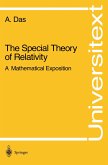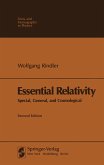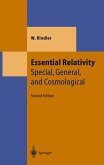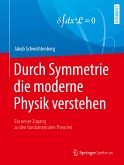This textbook bridges the gap between the level of introductory courses on mechanics and electrodynamics and the level of application in high energy physics and quantum field theory. After explaining the postulates that lead to the Lorentz transformation and after going through the main points special relativity has to make in classical mechanics and electrodynamics, the authors gradually lead the reader up to a more abstract point of view on relativistic symmetry - illustrated by physical examples - until finally motivating and developing Wigner's classification of the unitary irreducible representations of the inhomogeneous Lorentz group. Numerous historical and mathematical asides contribute to the conceptual clarification.
Like many textbooks, the present one is the outgrowth of lecture courses, mainly given at the University of Vienna, Austria; on the occasion of the English edition, it may be mentioned that our first such lecture course was delivered by my late co author, Roman U. Sexl, during the fall and winter term 1967-68 in the USA-more precisely, at the University of Georgia (Athens). Since then, Particle Physics has seen spectacular revolutions; but its relativistic symmetry has never been shaken. On the other hand, new technological developments have enabled applications like the GPS (Global Positioning System) that, in a sense, brought Relativity to the domain of everyday use. The purpose of the lecture courses, and thus of the book, is to fill a gap that the authors feel exists between the way Relativity is presented in introductory courses on mechanics and/or electrodynamics on the one hand and the way relativistic symmetry is presented in particle physics and field theory courses on the other. The reason for the gap is a natural one: too many other themes have to be addressed in the introductory courses, and too many applications are impatiently waiting for their presentation in the particle and field theory courses.
Like many textbooks, the present one is the outgrowth of lecture courses, mainly given at the University of Vienna, Austria; on the occasion of the English edition, it may be mentioned that our first such lecture course was delivered by my late co author, Roman U. Sexl, during the fall and winter term 1967-68 in the USA-more precisely, at the University of Georgia (Athens). Since then, Particle Physics has seen spectacular revolutions; but its relativistic symmetry has never been shaken. On the other hand, new technological developments have enabled applications like the GPS (Global Positioning System) that, in a sense, brought Relativity to the domain of everyday use. The purpose of the lecture courses, and thus of the book, is to fill a gap that the authors feel exists between the way Relativity is presented in introductory courses on mechanics and/or electrodynamics on the one hand and the way relativistic symmetry is presented in particle physics and field theory courses on the other. The reason for the gap is a natural one: too many other themes have to be addressed in the introductory courses, and too many applications are impatiently waiting for their presentation in the particle and field theory courses.








